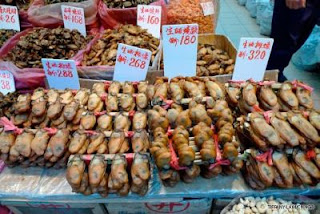Monopolistic Competition
The model of monopolistic competition describes a common market structure in which firms have many competitors, but each one sells a slightly different product. Monopolistic competition as a market structure was first identified in the 1930s by American economist Edward Chamberlin, and English economist Joan Robinson.Many small businesses operate under conditions of monopolistic competition, including independently owned and operated high-street stores and restaurants. In the case of restaurants, each one offers something different and possesses an element of uniqueness, but all are essentially competing for the same customers.
Characteristics of Monopolistic Competition:
Monopolistic competitive markets exhibit the following characteristics:(1) Each firm makes independent decisions about price and output, based on its product, its market, and its costs of production.
(2) Knowledge is widely spread between participants, but it is unlikely to be perfect. For example, diners can review all the menus available from restaurants in a town, before they make their choice. Once inside the restaurant, they can view the menu again, before ordering. However, they cannot fully appreciate the restaurant or the meal until after they have dined.
(3) The entrepreneur has a more significant role than in firms that are perfectly competitive because of the increased risks associated with decision making.
(4) There is freedom to enter or leave the market, as there are no major barriers to entry or exit.
(5) A central feature of monopolistic competition is that products are differentiated.
There are four main Types of differentiation:
(a) Physical product differentiation, where firms use size, design, colour, shape, performance, and features to make their products different. For example, consumer electronics can easily be physically differentiated.(B) Marketing differentiation, where firms try to differentiate their product by distinctive packaging and other promotional techniques. For example, breakfast cereals can easily be differentiated through packaging.
(c) Human capital differentiation, where the firm creates differences through the skill of its employees, the level of training received, distinctive uniforms, and so on.
(D) Differentiation through distribution, including distribution via mail order or through Internet shopping, such as Amazon.com, which differentiates itself from traditional bookstores by selling online.
(6) Firms are price makers and are faced with a downward sloping demand curve. Because each firm makes a unique product, it can charge a higher or lower price than its rivals. The firm can set its own price and does not have to ‘take' it from the industry as a whole, though the industry price may be a guideline, or becomes a constraint. This also means that the demand curve will slope downwards.
(7) Firms operating under monopolistic competition usually have to engage in advertising. Firms are often in fierce competition with other (local) firms offering a similar product or service, and may need to advertise on a local basis, to let customers know their differences. Common methods of advertising for these firms are through local press and radio, local cinema, posters, leaflets and special promotions.
(9) Monopolistic competitive firms are assumed to be profit maximiser's because firms tend to be small with entrepreneurs actively involved in managing the business.
(10) There are usually a large numbers of independent firms competing in the market.









0 comments:
Post a Comment